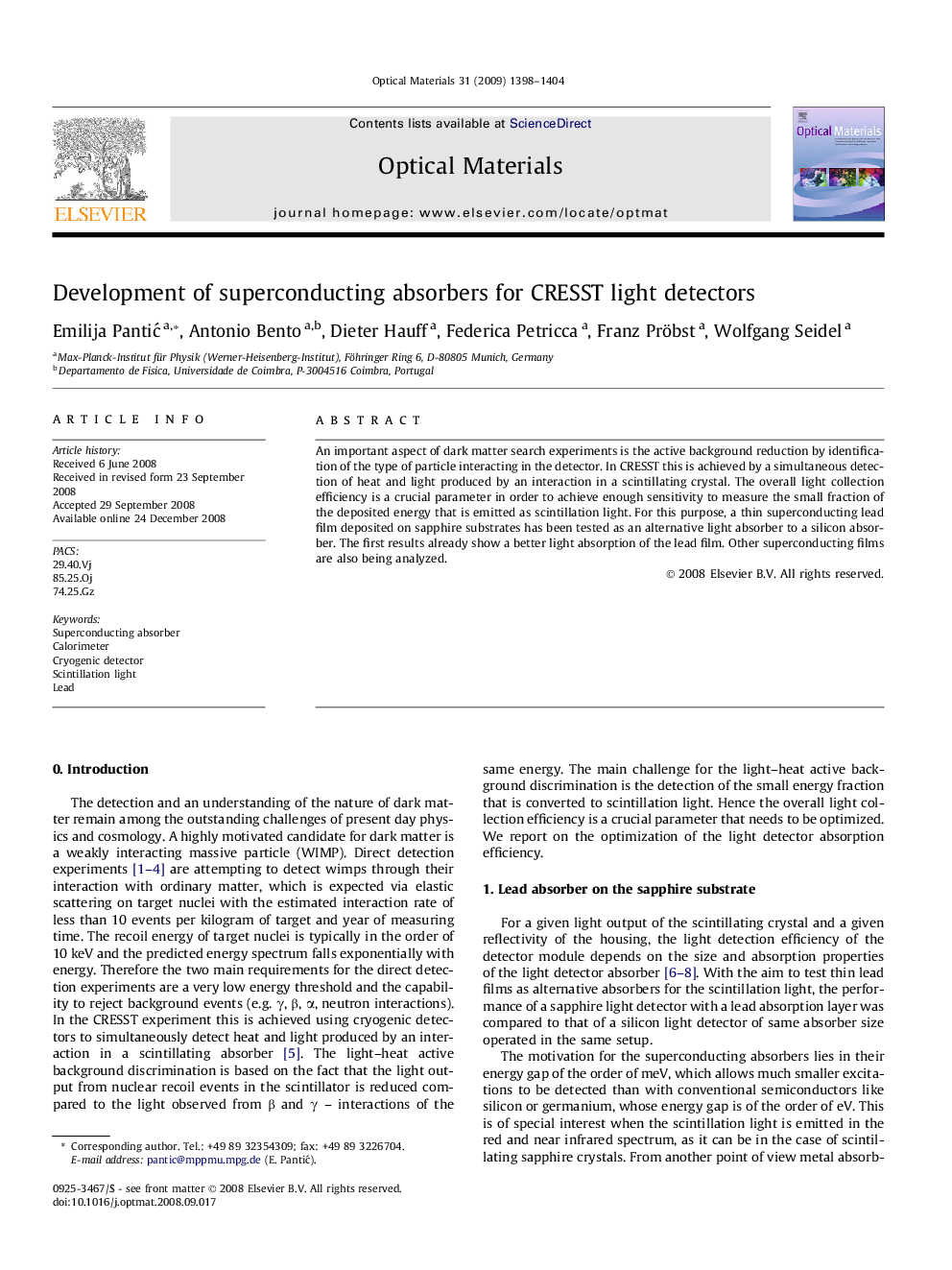| Article ID | Journal | Published Year | Pages | File Type |
|---|---|---|---|---|
| 1496175 | Optical Materials | 2009 | 7 Pages |
Abstract
An important aspect of dark matter search experiments is the active background reduction by identification of the type of particle interacting in the detector. In CRESST this is achieved by a simultaneous detection of heat and light produced by an interaction in a scintillating crystal. The overall light collection efficiency is a crucial parameter in order to achieve enough sensitivity to measure the small fraction of the deposited energy that is emitted as scintillation light. For this purpose, a thin superconducting lead film deposited on sapphire substrates has been tested as an alternative light absorber to a silicon absorber. The first results already show a better light absorption of the lead film. Other superconducting films are also being analyzed.
Related Topics
Physical Sciences and Engineering
Materials Science
Ceramics and Composites
Authors
Emilija PantiÄ, Antonio Bento, Dieter Hauff, Federica Petricca, Franz Pröbst, Wolfgang Seidel,
